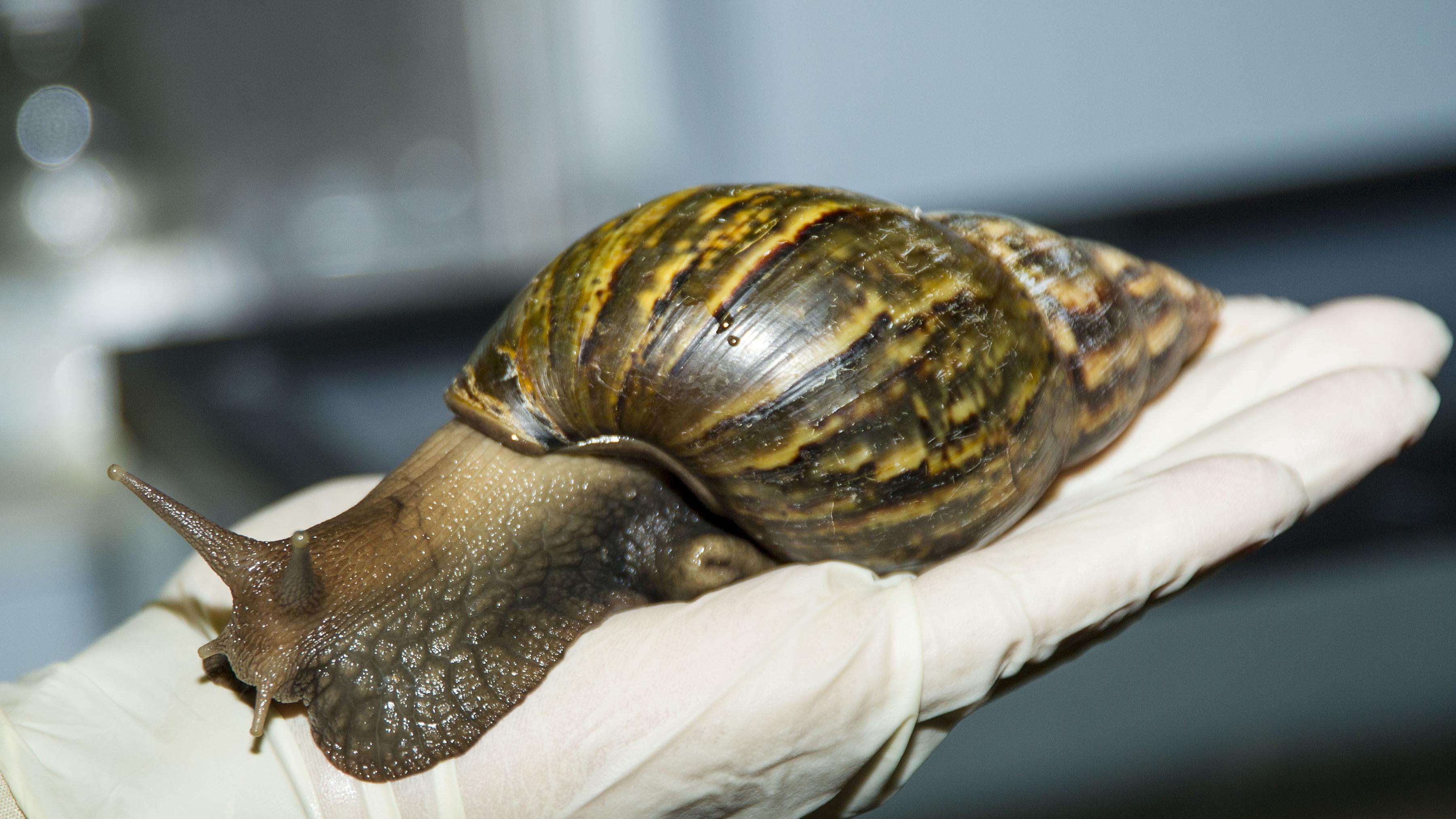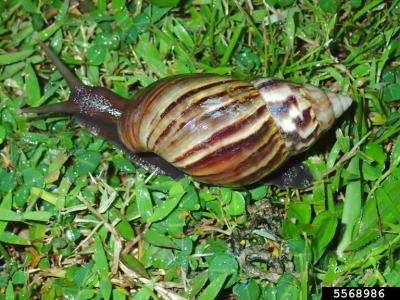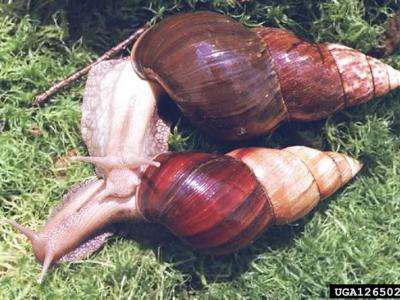Giant African Snail

Giant African snail (GAS) is the common name for several large African land snail species. The most damaging of these pests is Lissachatina fulica—a favorite of the pet trade. It is known to eat more than 500 types of crops and ornamental plants. GAS is a threat to animals and people because it can transmit parasites such as rat lungworm and other diseases.
GAS thrive in tropical and subtropical areas but can survive short periods of cold weather. They reproduce quickly, laying clutches of eggs every 2 to 3 months. It only takes one snail to start a population because they can self-reproduce. With help from the State of Florida and other partners, we have eradicated GAS twice from Miami (1975 and 2021), but we continue to battle small populations in other parts of Florida.
- Adult GAS are usually 3 to 4 inches in length, but some can reach up to 8 inches in length and 5 inches in diameter (about the size of an average adult fist).
- Generally, they have brownish, cone-shaped shells with nearly vertical lighter brown stripes. The brown shell color can vary widely.
- Their bodies inside the shell can be grayish-brown or milky-white in color. The light-colored bodies are most commonly seen in the pet trade.
- Eggs are round, about ¼-inch in diameter, and yellow to cream color.
Is It a GAS? Some native snails, especially those found in southern States, may look similar to GAS. View images of snails that could easily be mistaken for GAS.
Although GAS are illegal in the United States, people continue to bring them into the country for use as pets, food, and other purposes. To prevent an infestation:
- Do not buy or keep snails for any purpose.
- Never release live snails into the environment.
- When traveling outside the United States, do not mail or bring snails back with you.
- Research and government institutions must obtain a permit from APHIS to import and keep snails under very strict conditions.
Be cautious around these snails. They may carry organisms that can cause disease in people. If you handle snails or slugs, wear gloves and wash your hands. Always thoroughly wash fresh produce.
There are some native snails in Florida that are threatened and endangered and should not be moved or touched.
You should not attempt to get rid of GAS on your own. If you find a snail, do not touch it or attempt to pick it up. Instead, take a picture of the snail, note the location, and immediately contact your State plant health director or State department of agriculture. If State or Federal officials confirm it is GAS, they may establish a quarantine and use a molluscicide from the U.S. Environmental Protection Agency to treat the area.
Report Plant Pests and Diseases
Have you seen this pest or signs of pest damage? Immediately report your findings.
Find your State plant regulatory official
Find your State plant health director
Controlling Giant African Snails
Giant African snail was first introduced into the United States in Miami, FL, in 1966. It was eradicated in 1975. GAS was re-introduced in Miami in 2011 and eradicated again in 2021 (178.58 KB). We also detected and eradicated GAS in Puerto Rico. APHIS and cooperators are now responding to new introductions of the invasive snails in other parts of the Florida.
GAS is widespread in Hawaii. They are also established in American Samoa, Guam, and the Mariana Islands.
| Draft Envioronment Assessment | State | Comments due by | Send comments to | Questions |
|---|---|---|---|---|
| Giant African Snail Cooperative Eradication Program in Florida (1.39 MB) | Florida | May 21, 2024. | Go to www.regulations.gov. Type in the title “Giant African Snail Cooperative Eradication Program in Florida” Or send your comments to | James Walker Telephone: 352- 313-3045 Email: james.w.walker@usda.gov. |





